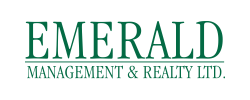How to Prepare a Lease Agreement for a Rental Property
Renting out a property is a potentially profitable venture, but there are also potential issues that could arise. Having a lease agreement in writing can help in such situations.
What is a Lease Agreement and Why Do You Need One for a Rental Property?
A lease agreement is a contract between a landlord and a tenant. Among other things, the agreement outlines that the tenant is allowed to live in a property for a fixed period. This contract binds the landlord and tenant to the terms of the lease.
A lease agreement is important since it clearly outlines the terms and responsibilities for both the landlord and tenant. This can help clarify things if there are any disputes. While the lease does not need to be in writing, it is strongly recommended that it is. This protects all parties involved and ensures that everyone clearly knows what is expected of them.
The Different Parts of a Lease Agreement
There are several important parts of a lease. This includes the names of the landlord and tenant(s), the address and description of the property, the date that the tenancy is to start and length of the agreement, the amount of rent due and the mode of rent payment, the amount of the security deposit and where it is held, how the tenancy may be ended, and more.
What Should be Included in a Lease Agreement for a Rental Property?
Each lease is different, but there are certain aspects that should be included.
In addition to what is listed above, it’s important to include:
- Responsibilities for maintenance and repairs
- Which utilities are included, and which are not
- Insurance requirements
- Rules regarding subletting
- Information on any other fees
- And much more
It is important to note that the Residential Tenancies Act is always enforced over any agreements made between the landlord and tenant. Therefore, if something in the agreement conflicts with the law, the law will apply. However, landlords and tenants can agree to other terms if they are not illegal.
For instance, the act says nothing about pets in a property. Therefore, landlords and tenants can agree to certain terms regarding pets if they wish.
If the property is a part of a building or condominium, there may be rules and bylaws associated with the property that the tenants will need to follow. In these situations, its a good idea for the landlord to provide the client with this information and state in the agreement that the tenant must follow these rules.
How to Protect Yourself and Your Property as a Landlord
Having a lease agreement in writing is one of the best ways to protect yourself as a landlord. Other ways to protect yourself include screening and choosing tenants wisely, doing a full walkthrough and completing a move-in inspection to document the rental properties condition.
It’s also important to be familiar with the province’s Residential Tenancies Act so that you know your rights and responsibilities as a landlord.
What to do if a Tenant Breaches the Lease Agreement
If a substantial breach of the lease agreement occurs, the landlord can apply to end the tenancy or give the tenant notice that the tenancy is being ended. At least 14 days of notice must be provided and the day the notice is given and the day the tenancy ends do not count as part of these 14 days.
A substantial breach by the tenant is typically a situation where a tenant does not pay rent in full when due, causes significant damage to the property, endangers others, or does not vacate the premises when tenancy ends.
In these instances, the landlord can apply to the Court or to the Residential Tenancy Dispute Resolution Service (RTDRS) to solve the dispute.
Managing properties and dealing with tenants can be time consuming and often difficult. We can help. Emerald Management & Realty Ltd. provides property management, property maintenance and rental property services and always provides the best possible support, care, and service. To find out more, please contact us online or call 403-237-8600.
« Return to Blog
